Soil sampling equipment
Soil sampling tools for sampling and storage of (undisturbed) soil cores / soil rings, roots & soil pore water. Root washing device for effective root recovery from soil samples. Contact us to discuss our soil sampling equipment needs - roots, soil, and soil pore water.
Soil Sampling Tools
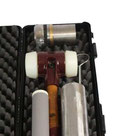
Soil Corer, sets of low-compressing soil coring equipment, manufactured according to long-term experience and field approved for decades. Different corer diameters and length available as sets.
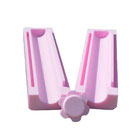
Soil Core Storage & Transport. Storage solutions for undisturbed soil cores - custom-made, exactly fitting the diameter and length of intact soil cores.
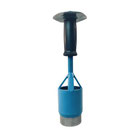
Soil Ring Sampler - direct (Type 1). The soil ring sampler is used to sample undisturbed soil samples directly into soil sample rings (of custom diameter, height and material). Standard & custom direct sampler sets available.
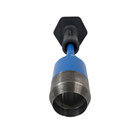
Soil Ring Sampler - with crown (Type 2). The Soil Ring Sampler is used to collect undisturbed soil samples in soil sample rings. The sampler holds a hardened cutting shoe that protects the sample ring. Standard & custom soil ring sampler kits available.
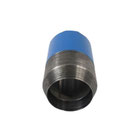
Heavy-duty Soil Ring Sampler (Type 3)- with separate drive head and ring sleeve with crown. The new Soil Ring Sampler type is used to collect undisturbed soil rings in heavier, particular dry soils. The sampler holds a separate drive head placed on a soil ring ring sleeve (with hardened cutting shoe). Standard & custom soil ring sampler kits available.
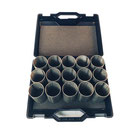
Soil Sample Rings. Sets of stainless steel rings of various diameters, heights and finishes (bevelled, etc.) for use with soil ring samplers, to be used for soil analysis incl. respiration measurements, etc. Buy standard Soil Sample Rings in the web store.
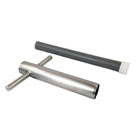
RC-3050 Topsoil & Root Corer. The lightweight topsoil corer with a sharp edge for fast sampling of humus, mineral topsoil and roots to a depth of ~20 cm by rotating the corer on the handlebars. No hammer required.
Soil Water Sampling
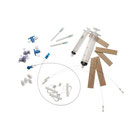
Microrhizon and Rhizon Samplers. The inert, tiny Microrhizon or larger-sized Rhizon Samplers are used to collect soil pore water and dissolved substances from Rhizonboxes, pots and in the field. Wide range of accessories and types (for a range of applications) available. Small to medium sample volumes, pot, mesocosm to field use (MacroRhizons). MicroRhizons for Rhizoboxes at web store
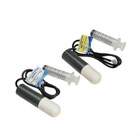
SoluSamplers, large-size and robust SoluSamplers to collect up to 70 mL of soil water and dissolved substances in mesocosms or the field. Two ceramic sampler types for different textured soils available.
Soil Respiration, CH4, BNF

Soil Respiration System Q-SR1LP. Reliable, modular and affordable soil respiration package for field and laboratory use. Soil moisture and temperature sensors included. Over 11 hours of field use. Systems for Soil Methane Emissions (field, lab) and Biological Nitrogen Fixation (BNF) Measurements (laboratory) available.
Root Washing Tools

Root Washer, hydropneumatic system to efficiently, semi-automatically rinse roots from soil core samples. Different sieve sizes and flush times allow the elutrator to work on most soil type x root system combinations. 4- and 8-chamber versions available.
Soil Sampling Procedures & Volume
- A critical step in obtaining accurate soil tests is to collect representative soil samples. ... Continue reading
-
SAMPLING DESIGN
Typically, plots can be cored in a simple random pattern across the field, taking at least 10-20 soil cores of equal size (depending on expected variability) at different soil depths. If you have distinct soil patterns in your plot, such as row-interrow in arable land or distance from trees in woodland, these will need to be taken into account. Alternatively, soil sampling transects can be established either to characterise a fairly homogeneous site or to follow expected changes in soil properties. Avoid or sample separately areas that are obviously very different from the site where you want to classify the soil - such as eroded areas, pits and mounds, wet areas - or make these gradients part of your soil sampling design. Plots with significant landscape or other differences can be divided into separate sampling areas. Differences may include soil type, slope, degree of erosion/soil compaction, drainage, land use history or other factors. The more you know about your site before deciding on a soil sampling design, the better your design can avoid potential bias. If resources and site disturbance were not an issue (most are), then more soil core samples means better means. In general, more intensive soil sampling should be used where detailed information on within plot variability is needed. This may include coring or probing (for soil water sampling) some areas more intensively than others - to determine small scale variability.
SAMPLING DEPTH
Laboratory tests of soil physico-chemical or biological parameters are calibrated to specific depths or soil morphometric horizons (i.e. (specific type of) organic layer, mineral soil, etc.) along soil profiles. It is therefore essential to sample at the appropriate depths or horizons, as a deeper or shallower soil core will give erroneous results. The sampling depth for most agricultural soils is usually the tillage depth, more skeletal (forest) soils are often sampled to a depth of about 30 cm - while deeper sampling is desirable. Where thick organic soil layers are present, it is often advisable to sample the mineral A horizon to a depth of at least 0-10 cm. Stratified sampling can be realized by subsequent division of whole soil cores into depth or morphometric horizons (e.g. using large soil corers or topsoil corers) or by directly sampling specific depth layers vertically from soil profile pits (e.g. with soil ring samplers).
The surface soil samples are usually used for conventional laboratory testing for carbon and nitrogen, pH, phosphorus, potassium and other nutrients (total or plant available). Deeper soil coring may be required when testing for rooting pattern of deep-rooted crops such as wheat and barley or trees. Ensure that surface litter, other organic layers and mineral soil layers are stored separately. Subsoil samples are also often required to estimate available nitrogen and to determine C stocks. Both topsoil and subsoil samples are needed to reliably estimate the depth distribution of root systems, for example.
SOIL SAMPLING EQUIPMENT
A stainless steel soil sampling probe / core soil sampler is the most commonly used tool in soil sampling. Particularly wider soil corer can provide a continuous soil core with minimal disturbance to the soil - that can be readily divided into various sampling depths / soil layers. Specific storage solutions are available to transport intact soil cores to the laboratory. The use of Soil ring samplers enables to keep the soil in the sample soil rings for transport to the lab, and subsequent analysis such as soil respiration measurements on undisturbed samples. For disturbed samples, e.g. for chemical analysis, plastic (freezer) bags are suitable for storage (best at 4°C; acceptable storage times vary widely with analyses - hours to a few weeks).
Even if compression in larger diameter soil corers and soil ring samplers ist often small, it is good practice to determine the length of the sampled core (e.g. when extracted to in your storage container) and the depth of the sample hole. However, any soil compression has to be avoided for determining soil density - a vital parameter to get reliable stocks of e.g. carbon and nutrients. Thus soil ring samplers are often used horizontally in soil pit walls for soil density sampling - the shorter samples and thin-walled soil rings effectively minimise soil compaction. Other tools required for soil sampling include plastic sample bags (size to suit your sampling intervals, e.g. 3 or 6 L bags), a tape measure/ruler to determine potential compaction and a waterproof marker for labelling. If you are concerned about the markings coming off the bags, place a plastic tag with a pencil mark in each bag. For soil ring samplers, some soil/pallet knives are required to carefully remove excess soil from the top and bottom of the sample rings before storage. See the VSI soil corer manual (pdf) for an examplary tools / packing lists for a soil sampling campaign.

Use the VSI Soil Ring Configurator to easily determine the effect of soil ring or core sampler inner diameter and height on soil sample volume, area covered, and approximate soil mass sampled (at given density, moisture content).
| References | Soil Sampling Methods, Sample Designs and Soil Classification | OPEN |
|
||
